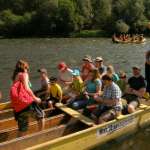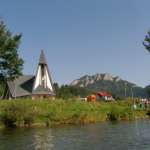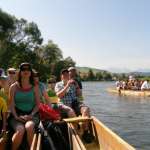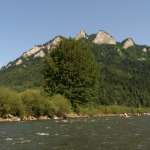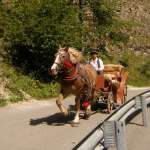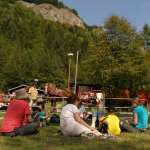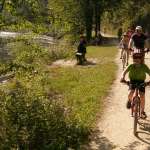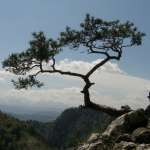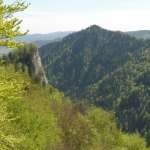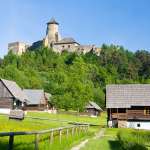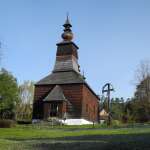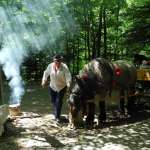
Červený kláštor is a unique cultural and historical relic set in the wonderful natural environment of Pieniny under the majestic mountain Tri koruny. The monastery was successfully restored in the years 1956-1966.
The National Park of Pieniny (PIENAP) is the smallest of the Slovak National Parks, but as far as its beauty concerns, it is in no way less beautiful. It is the second oldest Park in Slovakia. It stretches on the border with Poland; the river Dunajec passes through it. It is possible to hire a raft and admire the wonderful scenery of the Park navigating down the river.
The village of Červený Kláštor is the seat of administration of the National Park of Pieniny. The National Park of Pieniny was established on January 16, 1967 on an area of 21 square kilometres. Of its total area, forests represent nine square kilometres while the rest is unique agricultural landscape with small fields, green meadows and pastures adorned with stacks of sweet smelling freshly mown hay in summer, typical for the region of Zamagurie.
The National Park of Pieniny is rich in rare species of plants with several local endemites. The equally varied fauna covers 766 species of butterflies, 99 species of molluscs and more than 200 species of vertebrae. In the rocks and on forest pathways one can, for instance, meet a lynx or see an otter hunting in the water of the Dunajec river.
It is recommended to climb the tallest top of the Pieniny mountains Tri koruny lying on the Polish side of the Park. The beauty of these three sharp rocks though, can be also admired rafting down the river. The compound of limestone rocks, the Haligovské skaly, attracts with its numerous caves and cavities.
On a limestone cliff of 711 m over Stará Ľubovňa in the north-east of Spiš stands Ľubovňa Castle. Rulers met here in the past, it is the place where Polish coronation jewels were hidden and where famous adventurer, noble man and King of Madagascar, Móric Beňovský was imprisoned.
The Ľubovňa Castle was built at the turn of the 13th and 14th century, when it became a part of the boundary castles system in the north of the Hungarian Kingdom. Besides the protection of the former Polish-Old Hungarian border, its task was to secure the important trade route passing along the valley of the Poprad river to Poland.
In 1412, the historical meeting of the Old Hungarian ruler Sigismund of Luxembourg with the Polish king Vladislav II took place in the Ľubovňa Castle. The Castle was pledged to Polish kings and became the seat of Polish mayors, i.e. entrusted administrators of pledged Spiš towns.
Through a reconstruction accomplished after a great fire in 1553, the Ľubovňa Castle obtained a more modern shape of a Renaissance fortress. After the return of the Spiš towns to Old Hungary, the role of the Castle diminished and the Castle itself fell in decay. Later on the Castle was successfully reconstructed and the castle museum exhibitions have been installed there. In 1991, the castle chapel was reconstructed and re-consecrated. Regular church services are still held there.
An independent museum exhibition is presented by an open air museum in the area at the foot of the castle hill. It consists of a set of folk buildings that form a picturesque settlement around the Castle.
Source: Dajama
